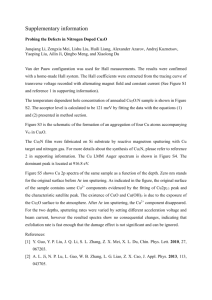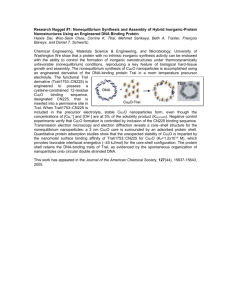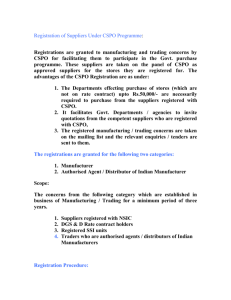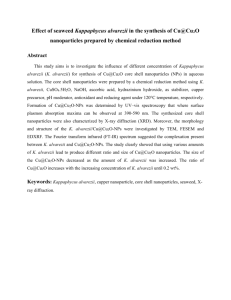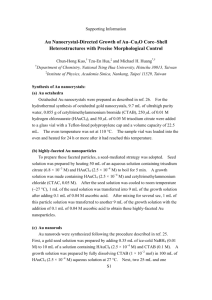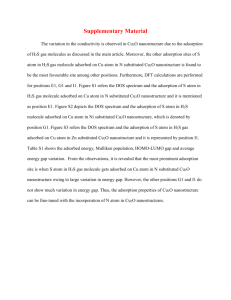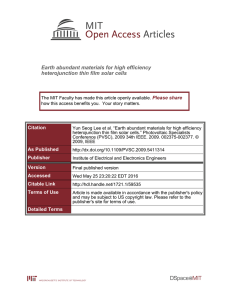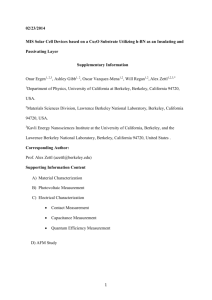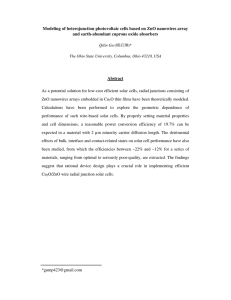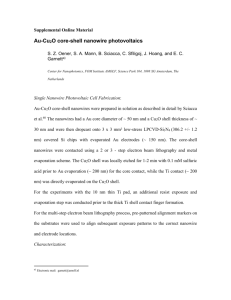Solar-to-Fuel Energy Conversion with Cu 2 O Photocathodes
advertisement
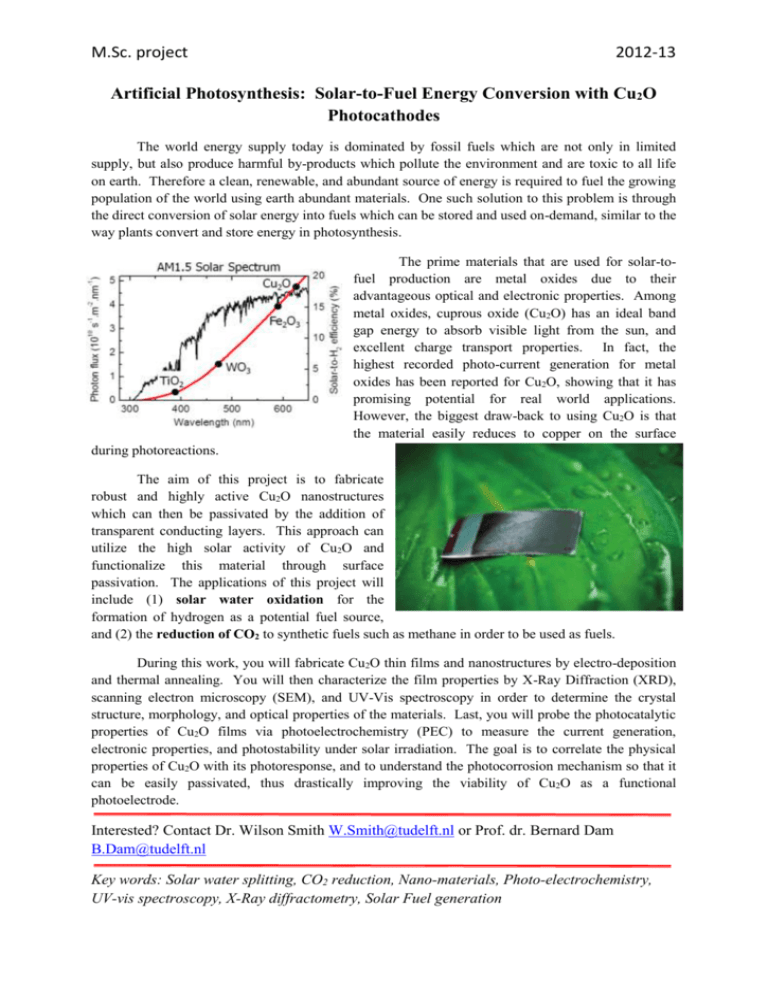
M.Sc. project 2012-13 Artificial Photosynthesis: Solar-to-Fuel Energy Conversion with Cu2O Photocathodes The world energy supply today is dominated by fossil fuels which are not only in limited supply, but also produce harmful by-products which pollute the environment and are toxic to all life on earth. Therefore a clean, renewable, and abundant source of energy is required to fuel the growing population of the world using earth abundant materials. One such solution to this problem is through the direct conversion of solar energy into fuels which can be stored and used on-demand, similar to the way plants convert and store energy in photosynthesis. The prime materials that are used for solar-tofuel production are metal oxides due to their advantageous optical and electronic properties. Among metal oxides, cuprous oxide (Cu2O) has an ideal band gap energy to absorb visible light from the sun, and excellent charge transport properties. In fact, the highest recorded photo-current generation for metal oxides has been reported for Cu2O, showing that it has promising potential for real world applications. However, the biggest draw-back to using Cu2O is that the material easily reduces to copper on the surface during photoreactions. The aim of this project is to fabricate robust and highly active Cu2O nanostructures which can then be passivated by the addition of transparent conducting layers. This approach can utilize the high solar activity of Cu2O and functionalize this material through surface passivation. The applications of this project will include (1) solar water oxidation for the formation of hydrogen as a potential fuel source, and (2) the reduction of CO2 to synthetic fuels such as methane in order to be used as fuels. During this work, you will fabricate Cu2O thin films and nanostructures by electro-deposition and thermal annealing. You will then characterize the film properties by X-Ray Diffraction (XRD), scanning electron microscopy (SEM), and UV-Vis spectroscopy in order to determine the crystal structure, morphology, and optical properties of the materials. Last, you will probe the photocatalytic properties of Cu2O films via photoelectrochemistry (PEC) to measure the current generation, electronic properties, and photostability under solar irradiation. The goal is to correlate the physical properties of Cu2O with its photoresponse, and to understand the photocorrosion mechanism so that it can be easily passivated, thus drastically improving the viability of Cu2O as a functional photoelectrode. Interested? Contact Dr. Wilson Smith W.Smith@tudelft.nl or Prof. dr. Bernard Dam B.Dam@tudelft.nl Key words: Solar water splitting, CO2 reduction, Nano-materials, Photo-electrochemistry, UV-vis spectroscopy, X-Ray diffractometry, Solar Fuel generation
